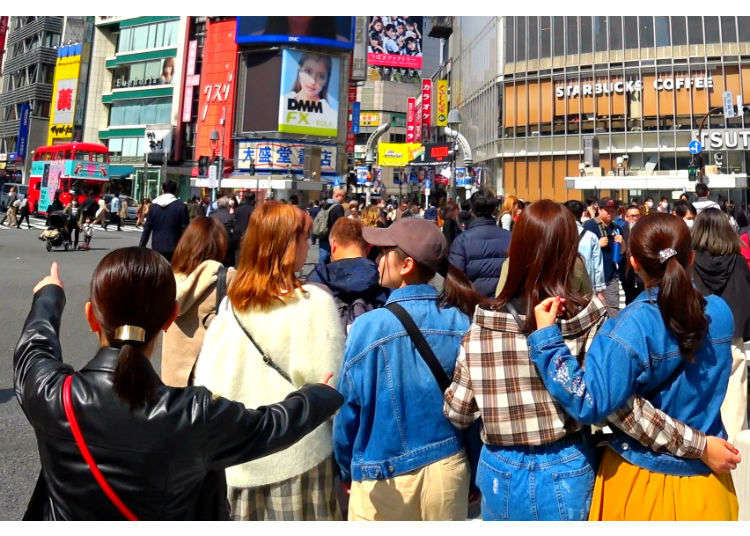
Moving abroad is exciting—what kind of areas does a country and its cities have? Before choosing where to live, you’ll want to know which area matches your lifestyle, where the restaurant and shopping hot spots are, and so on.
But even for vacations, this kind of information is important when deciding at which hotel to stay! There’s one big keyword that many use as a guidance: “downtown.” So how does this translate to Tokyo?
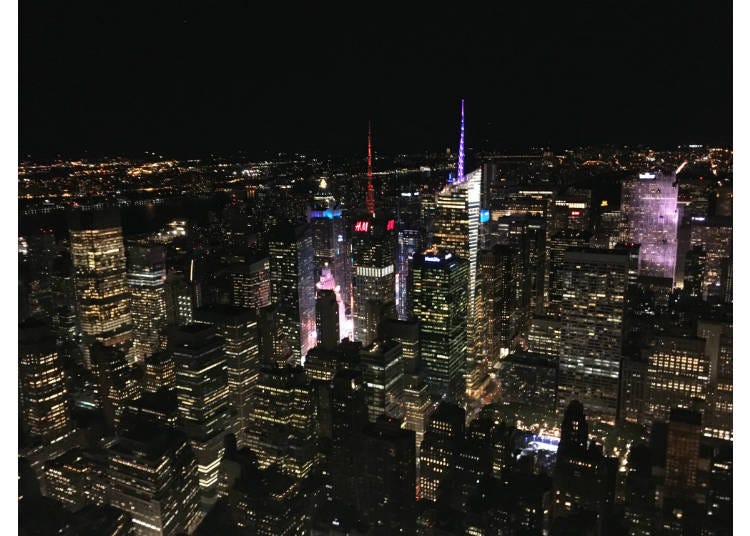
“The center of France is Paris.” Even the Japanese writer who lives in a town near Tokyo called Machida knows that much. The problem starts when diving deeper. For example, Tokyo’s neighborhoods of Shibuya, Shinjuku, and Otsuka all have very different atmospheres. Someone who stays in Otsuka might get the misleading impression that Tokyo as a whole is a really calm place, just because that one particular neighborhood is.
Indeed, if you want to get to know the authentic character of a city, it’s important to get a basic understanding the “city within the city” (meaning the city center, essentially). To get an impression of Tokyo, we asked various Japanese expats to compare the place they lived or still live at to Japan’s capital!
*Please keep in mind that these are memories of individual people and based on individual opinions.
United States, New York
Our first interviewee is Kenta-san who lived in Brooklyn for four years.
“The heart of New York is Manhattan, and its Times Square is like Shibuya’s large intersection. From there, you can also go to Fifth Avenue. With its many high-brand apparel stores, it feels like Tokyo’s Ginza.”
Right, Times Square is the place to go for people following the latest trends.
“Furthermore, there is a large park in the center of Manhattan called Central Park. That is like Yoyogi or Ueno Park in Tokyo, where the atmosphere is different in each direction, from west to east and north to south. And the further you go, the less safe it feels.”
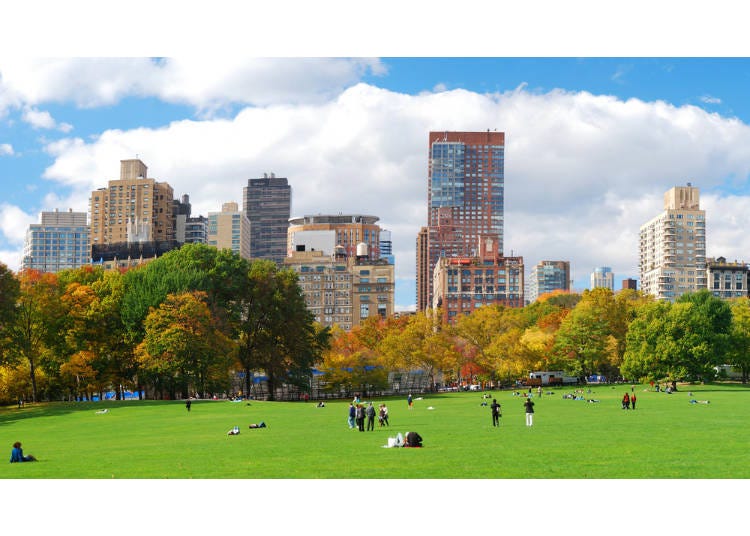
Central Park is definitely a place I want to visit. I’d love to eat a sandwich there.
“It took me about 20 minutes by train to get from Manhattan to Brooklyn. Brooklyn feels like Minatomirai in Yokohama and Tokyo’s Kichijoji and Aoyama. It’s full of young and stylish people.”
Yeah, I always thought that these areas bring out everyone’s inner fashionista.
Times Square is a lot like Shibuya, while Ginza feels just like Fifth Avenue. Kichijoji and Minatomirai are perfect if you’re looking for a Brooklyn-like atmosphere. The city feels more familiar already!
Hong Kong
Next up is Kaon-san who lived in Hong Kong for 6 years.
“Tóngluó wān is basically Shibuya.”
Excuse me, could you repeat that?
“Tóngluó wān is Causeway Bay, an area that has everything from big apartment buildings to restaurants. Plus, the Chungking Mansions area is a charmingly chaotic place that feels sort of like Kabukicho because there are many little shops, cheap hotels, and so on. You often see that side of Hong Kong in movies, it’s very representative of the city.”
I see.
“Tsim Sha Tsui inside Kowloon resembles Odaiba. It’s a dating spot with a beautiful view of the opposite shore, particularly stunning at night. There are also many luxury hotels and a bronze statue of Bruce Lee.”
A Bruce Lee statue immediately makes you feel safe as well, doesn’t it?
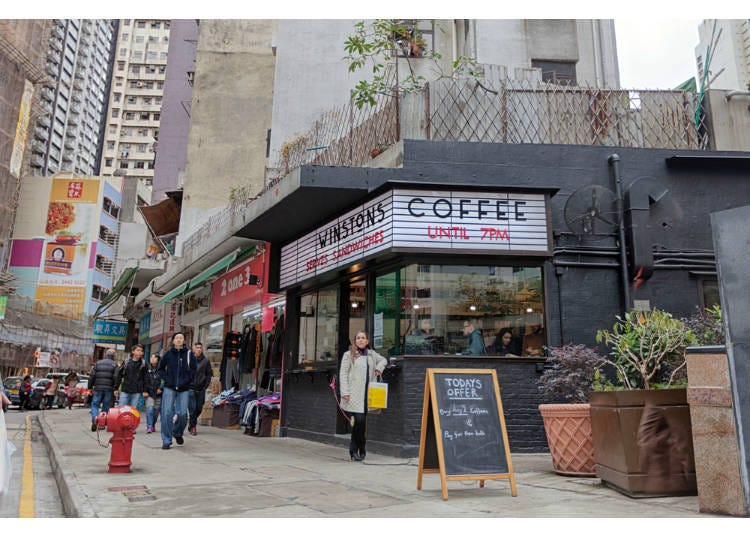
“The trendiest spot right now is Sai Ying Pun, an area in the Western District. It’s two stops away from Central, filled with a pleasant atmosphere of the old days, and a lot of new bars, cafés, and restaurants pop up one after another. It pretty much became stylish and trendy overnight and resembles Tokyo’s Daikanyama. Besides that, Repulse Bay is like Shonan. A lot of celebrities have cottages at this suburban beach, including Jackie Chan’s villa.”
Hong Kong sounds like a real blast, doesn’t it?
Causeway Bay is like Shibuya, the Chungking Mansions are like Kabukicho. Tsim Sha Tsui is Odaiba, and Sai Ying Pun has a Daikanyama vibe. Repulse Bay is also a bit like Odaiba. The city further became more familiar!
Bhutan
Natsumi-san lived in Bhutan for one year.
“The land of Bhutan is about the same as Kyushu. Rather than Tokyo, the cities look like places in Kyushu as well. But despite Bhutan being a car society, there is only a single traffic light.”
Only one?!
“Yup! It has only been installed recently at a pedestrian crossing, and there’s a video that explains how it works.”
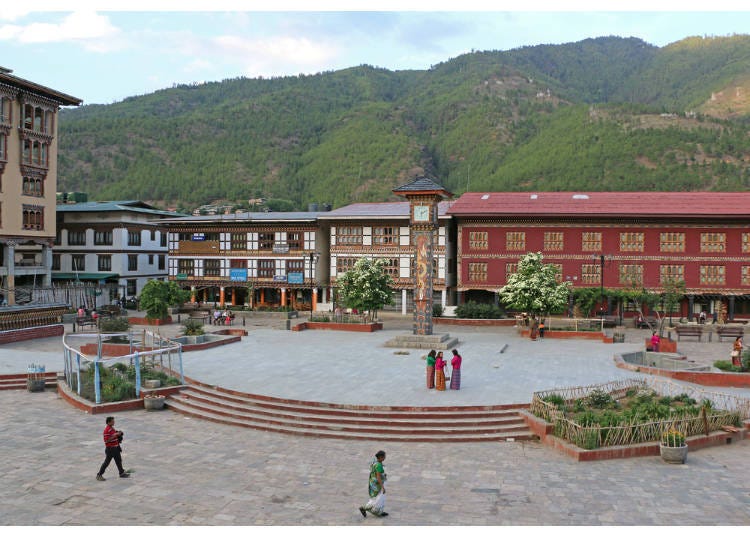
“The Clock Tower Square is Thimphu’s symbol just like Hachiko is the symbol of Shibuya. It’s a meeting spot and people also use it to chat each other up. Sabzi Bazaar is about a 15-minute walk away and you can buy pretty much anything there, much like the Aeon malls in Japan.”
Such markets are always awesome.
“Motithang seems like Tokyo’s Chiyoda or Minato Ward. It’s a high-class residential area where many politicians live. The Bhutanese often have a saying about that place that goes ‘We don’t need Beverly Hills, we have Bhutanese Hills!’”
As someone from Machida, I can relate to people seeing their home as glamorous even though it might objectively not be all that fancy.
While Bhutan’s main market seems to feel like Shibuya and resembles Japan’s Aeon mall, the country is compared to Kyushu, a rural area that has been developed. Visiting a country with only one traffic light certainly sounds intriguing!
Singapore
Saho Kame lived in Singapore for 4 years and 8 months.
“Orchard Road definitely is like Ginza. It’s the busiest and most prosperous part of Singapore, with many department stores like Isetan and Takashimaya, boutiques, and more. Somerset resembles Shibuya, I think. It’s just one station on the MRT (Singapore’s train) away from Orchard Road, but there are many international fashion brands. Goncha, the tapioca milk tea shop that’s famous in Japan, also came from Somerset.
Sounds like a lively place.

“Bugis is a lot like Harajuku, the town of the young people with plenty of pastel-colored shops, as well as an Arab street with a beautiful mosque. Bugis Junction is a mall that feels a bit like Laforet but subtler, and Bugis Street that is just outside the station is definitely very Harajuku. You might want to be a bit careful there, as plenty of suspicious brands are on sale there.”
Where is that hotel that is often featured in commercials in Japan, the one with the pool on the rooftop?
“Marina Bay Sands? That’s in the Marina area, not too far away from the area I just mentioned. The Merlion is also on that side. That can be compared to Odaiba, maybe?”
While Marina Bay Sands sounds like a must-visit place, I never knew that it wasn’t central. Having such a place in the middle of an area like Shibuya, though, is certainly scary.
China, Beijing
Next, we talk to Yutori-san who has lived in Beijing one year, as well as Chiharu-san who lived in Beijing for three years.
“The Zhengyangmen area is Shinjuku, I think. The atmosphere is similar to the pedestrian paradise in front of Shinjuku Station’s East Exit. If you want to buy souvenirs or eat Peking Duck, go there.”
Interesting.

“Also, Shibuya and Harajuku are a lot like Xidan and Sanlitun, I guess. They’re the areas of young people with many affordable fashion stores and people taking snapshots for magazines.”
When I think of China, I think of those kinds of snapshots.
“Nanluoguxiang has a very subculture-y vibe, so maybe Shimokitazawa or Koenji. Shichahai has lakes and parks, so it makes me think of Kichijoji and its Inokashira Park. A lot of locals and tourists stroll through the area in the evening, so young people will definitely enjoy this spot.”
That sounds a lot like Tokyo.
“Ping'anli is a town of music and instruments, so it makes me think of Ochanomizu. And Wudaokou has a Koreatown, so it’s definitely Shin-Okubo. Actually, a lot of international students are in that area. Oh, and Wangfujing is like Ameya Yokocho in Ueno.”
China is right next to Japan, so it is fun to hear about these kinds of similarities. It definitely sounds like a place with numerous fascinating spots!
United Kingdom, London
Tsuyukaze-san has lived in London for one year.
“King’s Cross Station in the heart of London is very much like the Tokyo Station area. In the famous books, it connects to the world of Harry Potter. In reality, however, it’s a terminal station that connects London to various parts of the country. Just west of it is St. Pancras Station and its station building is now used as a hotel, just like the Tokyo Station Hotel. The area has a similar atmosphere, really.”
I’d love to go see the famous Harry Potter Station!
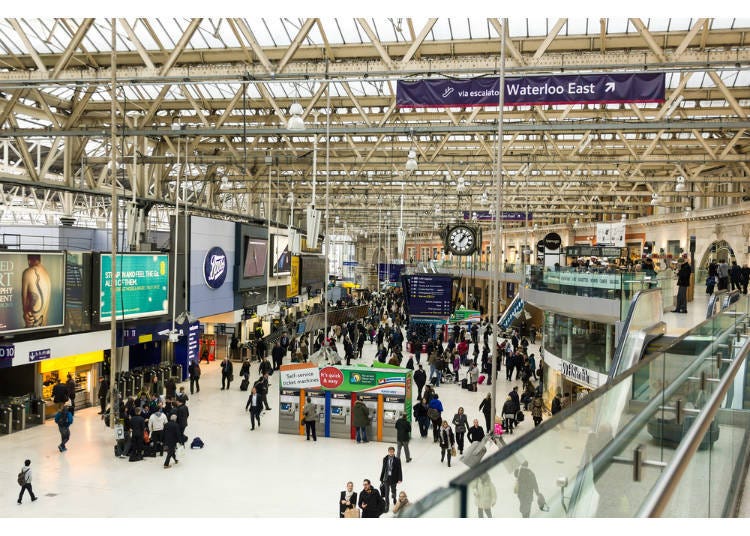
“Waterloo Station is Ikebukuro, I suppose. It’s less than a 20-minute subway ride away from King’s Cross and is also a huge terminal station with a lot of passengers. It’s also in central London, but on the other side of the river, across of the most prosperous part of the city, so to me, that location resembles Ikebukuro a lot.”
I really didn’t think of Ikebukuro when it comes to the United Kingdom, that’s very interesting.
“I’d also compare Soho to Shinjuku. In the past, people thought of it as a bit of a red-light district, but that image has changed. Now, it’s a fancy town in the middle of being redeveloped, famous for its fashion and style. It also boasts many theaters and delicious restaurant, and that neon glitz makes me think of Shinjuku.”
I never knew that there was a place like Shinjuku in the UK.
“Of course, Buckingham Palace and the surrounding Westminster area is like the Imperial Palace in Tokyo. The feeling is extremely similar, too. There are a lot of tourists in front of Buckingham Palace’s gates and while it doesn’t have a moat like the Imperial Palace, the neighboring St. James’s Park is home to many water birds.
That sounds very peaceful.
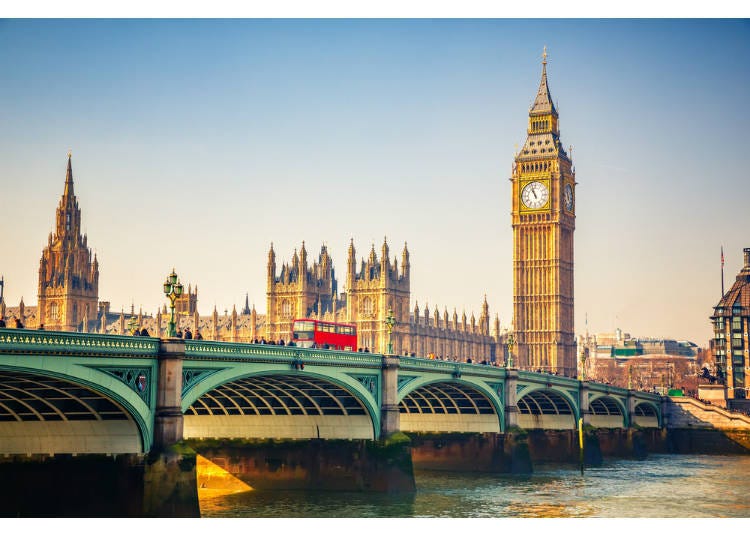
“When you cross Westminster Bridge and go to the shore opposite of Big Ben, you’ll find the large Ferris wheel called the London Eye, as well as attractions such as an aquarium. I feel like that area resembles Odaiba pretty closely, just with a river instead of the ocean. You even can enjoy cruise trips from there.”
The scale seems different from Odaiba, though.
“The South Kensington area is probably Ueno. It’s about 10 minutes away from Victoria Station. The Hyde Park makes me think of Ueno Park. Londoners enjoy strolls and picnics there, and the park is home to museums, stylish art exhibitions, music universities, concert halls, and soon. The area around South Kensington Station also feels very safe.”
“Oh, and Knightsbridge feels like Ginza, while the area around Oxford Street resembles Shibuya. Liverpool Street and the Brick Lane area feel like a dangerous version of Shimokitazawa. If you’re lucky, you can find a second-hand Burberry coat for 20 pounds!”
And suddenly, London starts feeling like Tokyo! With that level of insight, a strange city becomes a lot more familiar.
Katy-san also lives in London and says that Brighton in the south makes her think of Japan’s Shonan Coast.
“It’s a great city to live in and with many things to do for fun. It has a lot of restaurants and malls in the center, gyms in front of the station, and numerous pubs, casinos, and movie theaters. The connection to London is extremely convenient as well, so a lot of celebrities own houses there to visit during the winter, as it is relatively warm compared to the rest of the country.”
Indeed, that sounds just as upscale as Shonan.
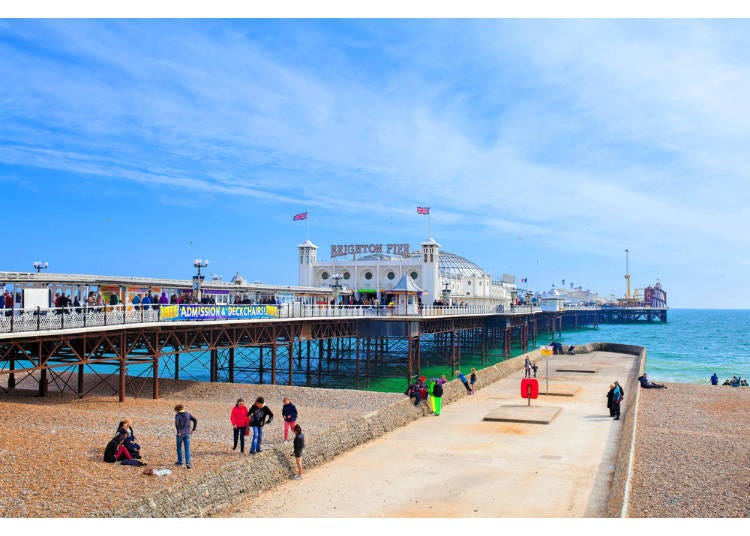
“Brighton Pier features a small amusement park with roller coasters and merry-go-rounds, and there’s even a game center on the other side. Incidentally, there is a lot of Japanese food such as ramen and sushi. Among those restaurants, I especially recommend a shop called POMPOKO. It offers rice bowls that are fast, delicious, and very reasonably priced. It’s within walking distance from Brighton Station, so make sure to stop by!”
With a bit of imagination, London transforms into Tokyo and the other way around!
Italy
Suna-san lived in Naples.
“I think that rather than Tokyo, Naples resembles Osaka.”
Really, Osaka?
“Oh yes. Naples is similar to Osaka’s south, areas such as Momodani or Tsuruhashi. Security there isn’t that great, people have unique dialects, and the prices are very cheap.”
That does sound like Osaka, indeed.
“Furthermore, Kyoto is very much like Rome.”
Kyoto?

“Termini Station in the center of Rome undoubtedly feels like Kyoto Station, with many sightseeing spots and convenient bus routes. The Piazza di Spagna is Kawaramachi, the Trevi Fountain is Kiyomizu-dera Temple.”
That sounds familiar.
“The Colosseum is on the opposite side of the Trevi Fountain and the Piazza di Spagna. This somewhat secluded location makes me think of Kinkaku-ji Temple and Kitano Tenmangu Shrine. Tiramisu in Rome, Matcha in Kyoto.”
Imagining all these places really connects the two cities that are thousands of miles apart. It’s both strange and intriguing that they share a connection like that.
Vietnam
Yuki-san lived in Vietnam for five years.
“The street connecting Ho Chi Minh City to Tan Son Nhat International Airport is straight, and a taxi ride of about 10-minutes takes you to an area with small restaurants, hospitals, schools, cafés, and so on. That always makes me think of Takadanobaba a bit.”
Takadanobaba, of all places?
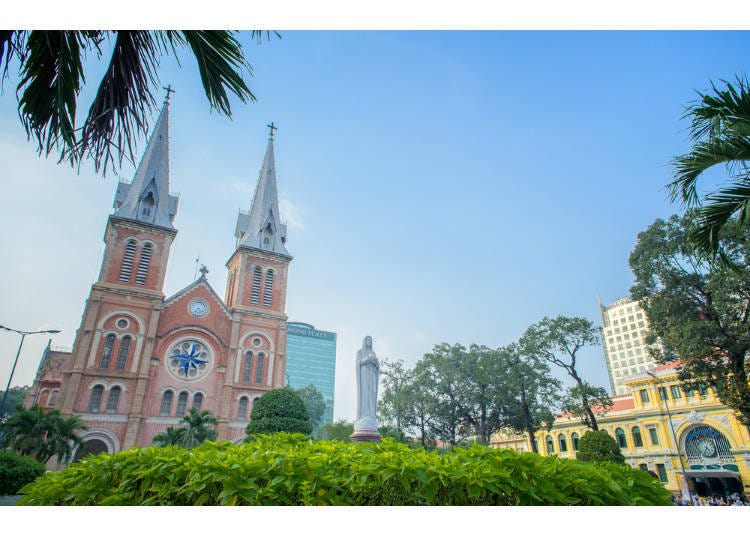
“It’s like the area around Waseda University, and if you continue on straight for another 5 minutes by taxi, you’ll find many luxury department stores, upscale hotels, theaters, and so on. That area is like Ginza.”
That makes sense.
“The old-fashioned cafes and galleries also have an atmosphere similar to Hibiya, and another 5 minutes straight ahead takes you to Saigon Zoo. That feels like Ueno.”
So not like Shibuya at all, but more like Tokyo’s east side?
“Yes, definitely.”
While there are areas in Vietnam that resemble Shinjuku and Shibuya, the more casual image of people on their motorcycles cruising through the street is much more dominant. This down-to-earth atmosphere might indeed feel just like Takadanobaba.
Australia
Next up is Mochiko-san who lived in Australia’s Adelaide.
“For a city that large, Adelaide has a relaxing atmosphere that feels almost like the countryside. Both mountains and the sea are close, so it’s a perfect spot for people who love the outdoors. Plenty of parking space is great for a car society as well, and it’s a great city to raise children in.”
That sounds nice. So to which place in Japan would you compare it?
“Hiroshima.”
Oh?
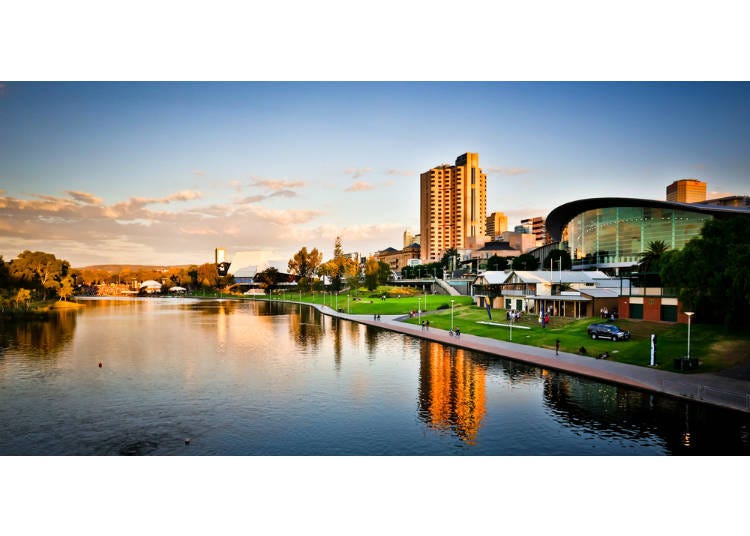
“If I really have it to compare to Tokyo, I’d probably say that Sydney feels like Tokyo and Adelaide feels like Machida, maybe.”
Machida?
“You find everything in Machida, but it’s not at the forefront of trends. The prices are cheaper than in Tokyo. Machida doesn’t really have a major characteristic that people talk about, so why is everyone familiar with the city? It feels the same for Adelaide.”
I feel rather honored as someone living in Machida.
I also spoke to Shoko-san who lived in Australia.
“Comparing it to Japan, I’d say Ibaraki Prefecture’s Hasaki and Kashima. I also hear Chiba a lot.”
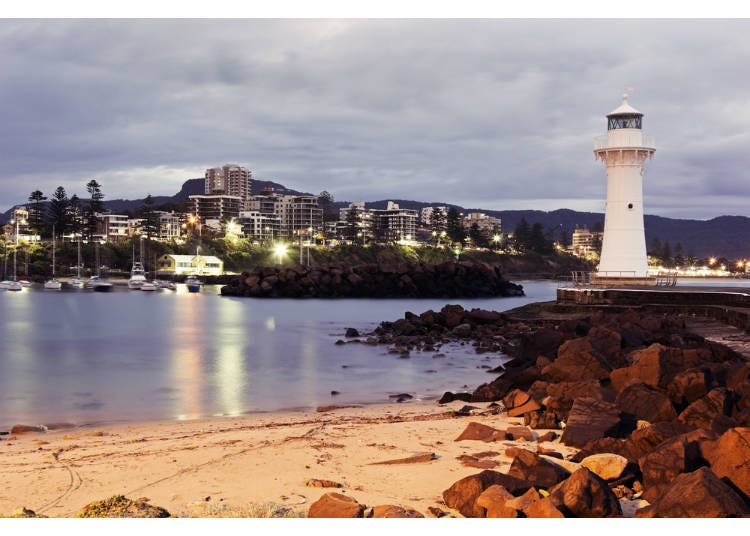
Those are very specific places...
“I think that those are two of Japan’s prettiest shores. And while being at the ocean, it’s not a major spot like Kamakura, so you have many surfers and people who just leisurely go on barefoot strolls. It’s not a bad place but less gorgeous than in the city. Likewise, it’s not all farmland either, so I’d say that it’s a place that’s easy to live at.”
So a somewhat rustic but charming and stylish atmosphere? I see.
“The University of Wollongong is nearby, there are many international students and you can see people from all over the world. That feels a bit like Koenji.”
Koenji is like Australia, who knew!
Apparently, you cannot really compare Adelaide and Wollongong to any of Tokyo’s areas. However, instead of simply naming some random place inside Tokyo, the two expats managed to make the large country seem more familiar by looking outside of the capital.
Malaysia
Akari-san lived in Kuala Lumpur and Shi-san lived in Bangi.
“Bukit Bintang is a district of Kuala Lumpur that has many large shopping malls and plenty of tourists and international sightseers go there on holidays, so it feels a bit like Roppongi, Shibuya, and Shinjuku.”
I see.

“Bukit Bintang is Malay and means ‘hill of stars.’ Just as the name suggests, the area is lit up with the lights of the city at night.”
So it’s a night hot spot!
“Yup. And about 6 minutes by car from there is Petaling Street, resembling Ueno and Ameya Yokocho.”
That’s like if Shibuya and Ueno were right next to each other.
“It’s filled with stalls selling Chinese food and fruits, as well as counterfeit brand goods and so on. As soon as you set foot in that street, the staff will call out to you. ‘Look at this!’ or ‘Just take a look around!’”
I can picture that really well from your description!
“Other than that, Kuala Lumpur seems just as compact as Tokyo. As soon as you leave the urban areas, you’re surrounded by vast fields and forests.”
That makes me think of Zootopia.
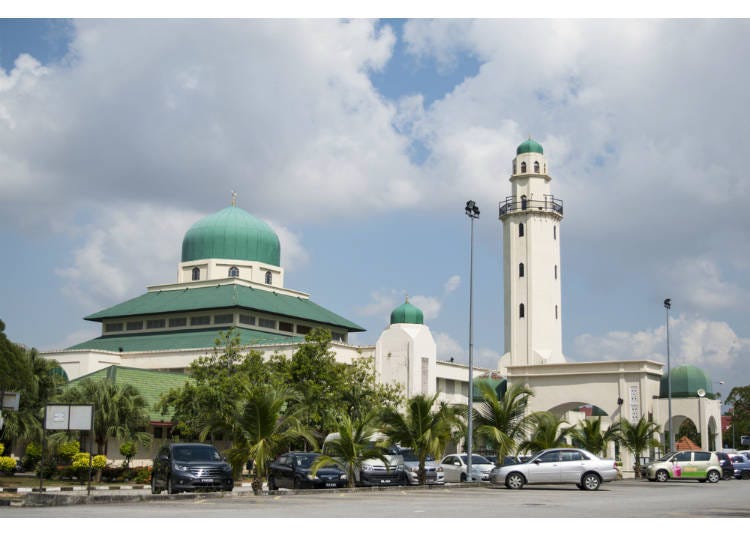
“Bangui is a 40-minute train ride away from Kuala Lumpur. The college campus is very close to the station, and other than that, there is nothing that really stands out, neither good nor bad. Everything you need for daily life is there.”
If you compared that to Tokyo, what would it be
“Maybe Fuchu?”
That’s so local, it made me laugh.
A lot of us sadly only think of Malaysia as the country that’s so close to Singapore, but there seem to be many lively cities and exciting night spots! A city that resembles Tokyo’s Fuchu is also interesting.
Malta
Arissa-san lived in Malta for seven and a half months.
I never knew that we had followers in Malta!
“It seems like a minor country, but the entirety of Malta feels very much like Okinawa. The summers are long and hot while the winters are mild and short. It’s a bit of a resort island for the rest of Europe, apparently.”
Now, that sounds amazing!
“I’d divide the capital Valetta into four areas in regard to Tokyo and Japan: Asakusa, Ueno, Naha, and Nara.”
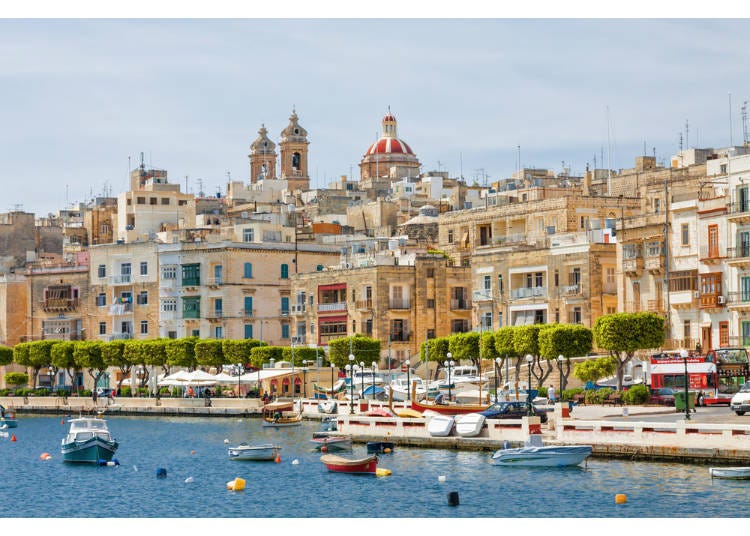
“Valetta as a whole is a stronghold and a world heritage site. There are a lot of buildings made out of a honey-colored stone called Maltese stone. You can really feel the history of the city, much like in Asakusa and Ueno with their many museums and sightseeing spots. It also reminds me of Nara and Naha, where the traces of old history are still very much alive.”
That sounds fascinating.
“Furthermore, Malta is also an island full of cats!”
Cats?
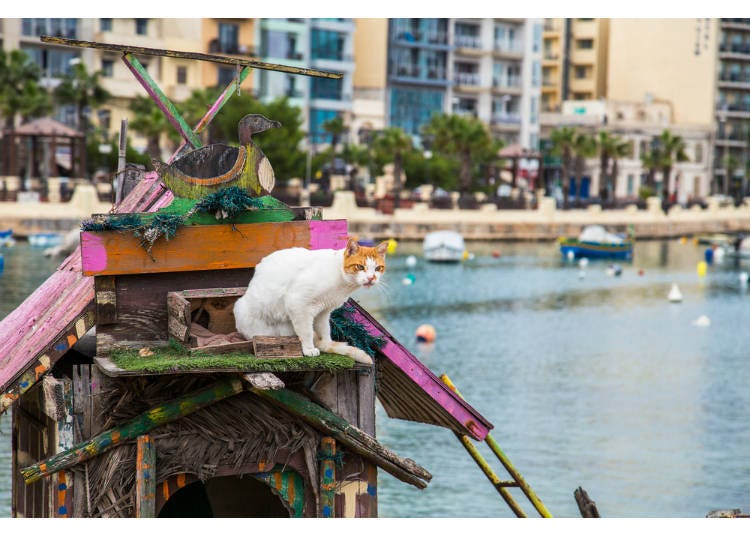
“There are so many in the city.”
That alone makes me want to visit.
“About a 20-minute bus ride from Valetta is a place called Sliema, on the northern shore of Malta. It’s a modern city with the best shopping street on the entire island. Swimming in the sea or relaxing in a café while enjoying Valetta’s scenery is wonderfully relaxing, much like an open-air Tokyo.”
That sounds rather perfect...
“St Julian's is a town with many delicious restaurants and upscale restaurants, casinos, and so on. That could be Shinjuku or Roppongi. Mdina definitely is Kyoto. It was once the capital and still boasts its historic cityscape.”
I did not know anything about Malta, but the vivid descriptions make me feel like I have been there before. And it certainly sounds like an amazing island!
Denmark and Sweden
Next up is Piyo-san who lived in Sweden’s Lund for one year.
“Lund is a student town with a lot of supermarkets, convenience stores, parks, libraries, and residential areas, centered around Lund University. That’s why it reminds me of Takadanobaba. The residents are mainly students and a lot of them are from abroad, mixing freely with Lund’s locals. It feels like two extremes.”
So a very international student town. That sounds fun and lively.
“Malmö, Sweden’s third-largest city, is a 30-minute train ride away from Lund. It has many stylish shops, restaurants, cafes, and more plentifully dotting the city. Festivals are held in the summer at the open spaces a bit further from the city center. It’s a lively place, so I guess you could compare it to Shibuya, maybe?”
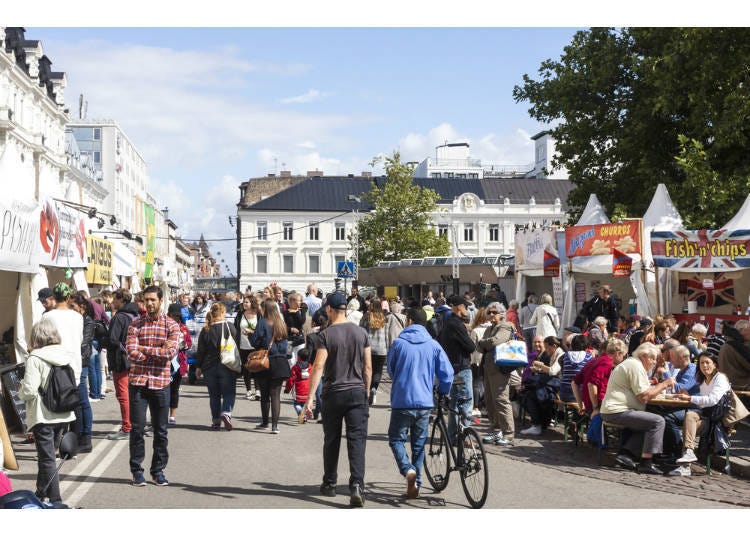
”The Shibuya of Northern Europe” sounds like a crowded place, but that’s probably not what it looks like in reality.
“Copenhagen is the capital of the neighboring Denmark. It is full of cafés, restaurants, fashion spots, modern libraries, an amusement park called Tivoli Gardens, an old castle, the famous mermaid statue, and more. It’s a real sightseeing area where tradition and modernity mix, and because of the amusement park, it makes me think of a combination of Maihama and Asakusa.”
That sounds like a great combination, but Scandinavia does have that kind of image, doesn’t it.
“Helsingborg has many contemporary art museums, old castles, and so on. That’s a bit like Ueno. The Swedish capital, Stockholm, reminds me of Shinjuku or the area around the Imperial Palace. With a castle, a palace, the Nobel Museum, concert halls, restaurants, cafés, and fashion shops, it’s a genuinely modern city.”
...and it sounds like a super fancy place.
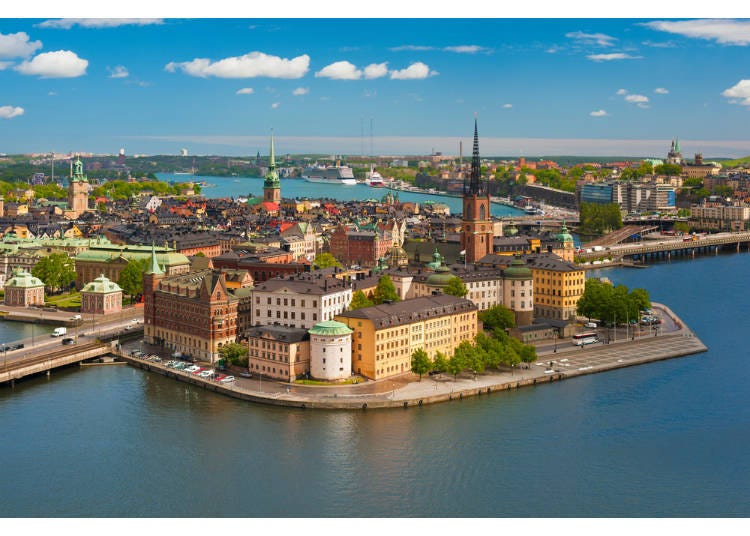
“Also, the area called Gamla stan feels like Kichijoji. There are tiny cafés that don’t seat more than 10 people, restaurants serving traditional Swedish cuisine, little private shops, and more. There’s a rumor that this is the setting of the Ghibli movie ‘Kiki’s Delivery Service.’”
Wow, I had no idea!
A lot of Japanese people associate Scandinavia with fashion and stylish designs, which is probably influenced by that very same movie. And Ikea, of course.
Final Thoughts
Thanks to our many expats and their unique experiences, we got to hear interesting insider perspectives about cities all around the world and in what way they resemble Tokyo or other places in Japan. In that way, even places where we’re never been suddenly seem familiar! If you’ve never been to Tokyo before, you might have gotten an idea of what some areas of the city feel like—which is a great start for any vacation planning!
Writer: Katsuse Masahiko
Top image credit: StreetVJ / Shutterstock.com
- Area
- Category
*Prices and options mentioned are subject to change.
*Unless stated otherwise, all prices include tax.
Popular Tours & Activitiess
Recommended places for you
-

Keisei × Keikyu 16-Temple Goshuin Tour: Discover Deeper Tokyo & Yokohama
by: Guest Contributor
-
Ad

Preserving the Beauty of World Heritage Site Shirakawa-go for the Future Through Responsible Travel
-

Simply Oishii Wagashi School Discover Japanese Culture Through Wagashi: A Hands-On Experience!
by: Guest Contributor
-

Enjoy Japan's Gorgeous Winter Lights! Ride the Romancecar to Shonan no Hoseki Illumination
by: Guest Contributor
-

New Seibu L00 Series Launching in 2026! What to See Along the Tokyo-Area Golden Route
by: Guest Contributor
-

A Travel Game Changer! Go Hands-Free Between Tokyo and Kyoto with LUGGAGE EXPRESS by JTB and JR Tokai
by: Guest Contributor
Inspiration for Accommodations
-

Enjoy Mt. Fuji from the Comfort of Your Room! Recommended Ryokan with Mt. Fuji View
-

Stay Near the Cherry Blossoms! Hotels for Cherry Blossom Viewing in Tokyo
-

Family-Friendly Hotels with Free Shuttle to Disneyland: Convenient Access for a Magical Stay
-

Top Ranked Hakone Hotels with Mt. Fuji View: Enjoy Stunning Scenery from Your Private Space
-

Convenient Tokyo Hotels with Airport Shuttle: Ideal for Families and Heavy Luggage
-

Stunning Tokyo Tower View Hotels: Enjoy Spectacular Scenery from Your Private Space
-

Convenient Asakusa Hotels with Kitchens: Ideal for Extended Family Visits
-

Experience Luxury: Hakone's 10 Best Five-Star Accommodations
-

Enjoy Mt. Fuji Autumn Leaves! Top Hotels Near the Popular Autumn Leaves Corridor
-

Experience Hakone Fall Foliage from Your Room with Stunning Views
-

Be ready for more than sightseeing: Tokyo Metropolitan Government's disaster preparedness event for foreigners in Japan
by: Lucio Maurizi
-

8 Unfamiliar (But Totally Normal) Customs in Japan!
-

From Cutting-Edge to Traditional: 12 Must-Visit Shops in Tokyo’s Glitzy Ginza
-

Meiji Shrine (Meiji Jingu): Exploring the Sacred Sanctuary of Peace in Bustling Tokyo
-

'Japanese people are way too sly!' 8 reasons why foreigners were shocked at Japanese beauty salons
-

LIVE JAPAN Awards 2017 – Meet the Most Popular Spots and Shops among International Tourists to Tokyo!
- #best ramen tokyo
- #what to buy in ameyoko
- #what to bring to japan
- #new years in tokyo
- #best izakaya shinjuku
- #things to do tokyo
- #japanese nail trends
- #what to do in odaiba
- #onsen tattoo friendly tokyo
- #daiso
- #best sushi ginza
- #japanese convenience store snacks
- #best yakiniku shibuya
- #japanese fashion culture
- #best japanese soft drinks


















